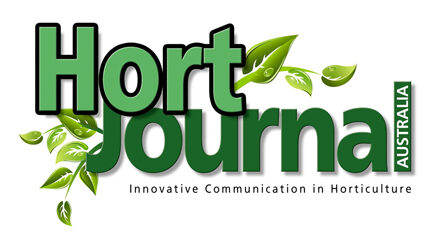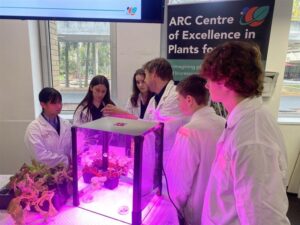
Plants in Space: A global education initiative
By Sally Fierenzi and Megan Hirst
Horticulture is the art and science of cultivating plants, encompassing everything from growing food crops and conserving rare species, to producing ornamental plants for amenity usage. There are various techniques and practices to grow and maintain plants, including soil preparation, planting, watering, fertilisation, and pest control. However, have you ever considered what it takes to grow a successful plant beyond Earth?
Growing Beyond Earth
Growing Beyond Earth® (GBE) is a classroom based, citizen science project for schools designed to advance NASA research on growing plants in space. As NASA looks toward a long-term human presence beyond Earth’s orbit, there are specific science, technology, engineering, and math (STEM) challenges related to food production in space. GBE addresses those challenges by expanding the diversity and quality of edible plants that can be grown aboard a spacecraft and beyond. On Earth, GBE is also advancing technologies for growing plants in urban, indoor, and other resource-limited settings. Established in the United States of America in 2015 as a partnership between Fairchild Tropical Botanic Garden and NASA’s Exploration Research and Technology Programs, GBE is now underway in over 400 schools across 48 states in the USA, and in eight countries, including Australia.
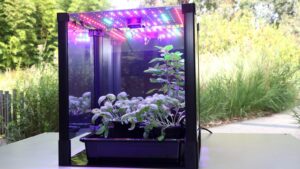
Growing Beyond Earth for Australian Schools
Growing Beyond Earth for Australian Schools was launched in early 2023 at Royal Botanic Gardens Victoria as a pilot program with two participating schools. We expanded our school reach in 2024 to seven schools participating in the program, six in Victoria and one in Tasmania. In 2025, with generous support from the Toyota Community Trust and Melbourne Airport, the program has skyrocketed in participation and impact. It now includes 36 schools across Australia, featuring 13 new schools from Greater Metropolitan Melbourne, 15 regional schools from across Victoria, and a school in South Australia. The strong interest from other states indicates significant potential for continued national expansion.
To support the rapid growth of the Australian program and provide meaningful, context-specific learning, a comprehensive support framework was developed in collaboration with La Trobe University (ARC Plants for Space, and La Trobe Institute for Sustainable Agriculture and Food). This framework adapts the program to the Australian academic calendar and time zones, overcoming barriers presented by the original US-based model which runs from August to June. Throughout the program, students become space botanists conducting real-time experiments using classroom-based specialised plant growth chambers that simulate conditions aboard the International Space Station. They grow, observe, and document edible plants under controlled conditions, following scientific protocols provided by Fairchild Tropical Botanic Garden in collaboration with NASA. As part of the global research effort, students collect data on plant germination, growth patterns, and resilience, and then upload their findings to the Global Schools Data Portal. This online platform connects the GBE student scientists worldwide, and feeds directly into ongoing research by NASA and other partners.
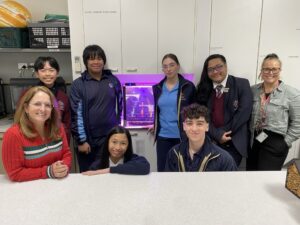
In Australia, this work is further enhanced by the Plants for Space team, an Australian Research Council (ARC) collaboration working with NASA to identify and evaluate crops suitable for long-duration space missions, including lunar and Martian exploration. Australian students can identify and relate to this work, giving their project contributions meaning into solving real-world challenges in space science and sustainable food systems. To foster connection and celebrate student achievements, the program includes an annual GBE Australian Schools Symposium. This event provides students with the opportunity to share their findings, exchange ideas, and hear from global experts in space science and botany.
To infinity and beyond
In the words of Space Ranger Buzz Lightyear, ‘to infinity and beyond’, education programs can be bold and optimistic ventures that inspire forward-thinking approaches to some of our planet’s greatest challenges. In a world facing climate change, biodiversity loss, and increasing pressure on food systems, students need more than just scientific knowledge; they need curiosity, creativity, and a deep appreciation for the role plants play in sustaining life.
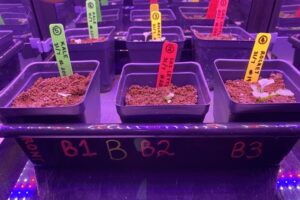
Through Growing Beyond Earth, students are not only engaging in scientific research, but they are also discovering how plants are central to life on both Earth and in space. By experimenting with growing conditions, studying plant resilience and contributing to global research efforts, they are learning that plants are more than food – they are oxygen producers, ecosystem stabilisers and companions in our quest for a sustainable future. This program reminds us that the future of our planet, and of space exploration, lies in the hands of the next generation, and the classroom can be a launch pad for both discovery and change.
For more information on school education and outreach programs, subscribe to Royal Botanic Gardens Victoria’s Learning E-news via the homepage to keep up to date with this and other programs.
Acknowledgments
We wish to thank Amy Padolf, Director of Education, Fairchild Tropical Botanic Garden and her colleagues, Frazer Thorp, Education and Engagement Manager, Plants for Space, La Trobe University, and Kim Johnson, Scientist, La Trobe Institute for Sustainable Agriculture and Food, for their continued support.
Sally Fierenzi, Creative Producer Community Engagement and Outreach
Megan Hirst, Research Scientist – Seed Ecology
Royal Botanic Gardens Victoria
All images supplied by the authors.
